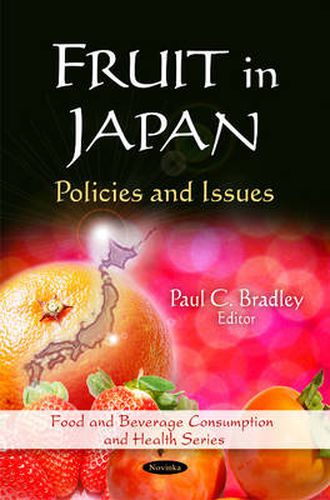Readings Newsletter
Become a Readings Member to make your shopping experience even easier.
Sign in or sign up for free!
You’re not far away from qualifying for FREE standard shipping within Australia
You’ve qualified for FREE standard shipping within Australia
The cart is loading…






Japan is a large market for fruits and its consumers spend $10 billion per year (wholesale value) on fresh and preserved fruits. The United States, the second-largest foreign supplier of fruits to Japan, sent about $450 million in fruit exports to Japan in 2009, 10 percent of total U.S. fruit exports. Japanese government policies regarding this large market affect U.S. fruit exports and offer a point of comparison for other developed countries. Consumption of traditionally important fruits, such as citrus fruits and apples, has been declining and expenditures on fruits for consumption at home have decreased. This book examines Japan’s policies that protect and regulate its agricultural markets. Japan’s policies affect existing trade patterns and are relevant to the current round of global trade negotiations conducted by the World Trade Organization (WTO).
$9.00 standard shipping within Australia
FREE standard shipping within Australia for orders over $100.00
Express & International shipping calculated at checkout
Japan is a large market for fruits and its consumers spend $10 billion per year (wholesale value) on fresh and preserved fruits. The United States, the second-largest foreign supplier of fruits to Japan, sent about $450 million in fruit exports to Japan in 2009, 10 percent of total U.S. fruit exports. Japanese government policies regarding this large market affect U.S. fruit exports and offer a point of comparison for other developed countries. Consumption of traditionally important fruits, such as citrus fruits and apples, has been declining and expenditures on fruits for consumption at home have decreased. This book examines Japan’s policies that protect and regulate its agricultural markets. Japan’s policies affect existing trade patterns and are relevant to the current round of global trade negotiations conducted by the World Trade Organization (WTO).